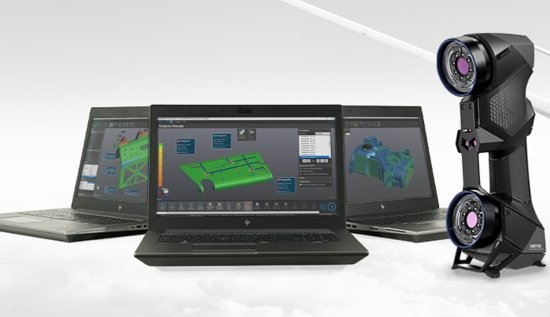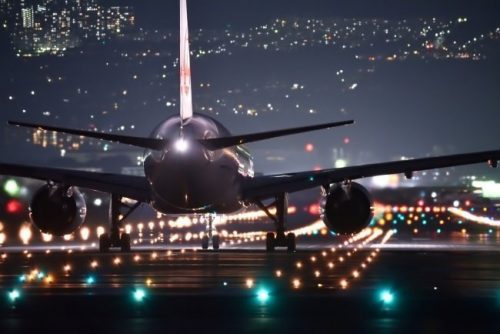At the Paris Air Show this week, TRUMPF is demonstrating how additive manufacturing (AM) can improve satellites and aircraft.
Satellites are subject to a whole array of ever more stringent requirements. On the one hand, they need to be as light as possible, because every kilogramme that a launch vehicle carries into space costs the client several hundred thousand euros. At the same time, however, satellites must be robust enough to withstand the tremendous forces experienced during launch.
Weight reduction is equally important for aircraft because it leads to a significant drop in fuel consumption. This reduces both their environmental impact and costs.
Additive technologies are the perfect match for the aerospace industry because they enable engineers to create parts that are both lightweight and robust. These methods only add material where it is actually needed, while conventional methods such as milling and casting often struggle to eliminate superfluous material. 3D printers are also adept at handling light metals such as aluminium and titanium, and AM engineers enjoy much more freedom in the design process because they are not confined by the limitations of traditional production methods.
TRUMPF offers expertise in both the key methods required by the aerospace industry: laser metal fusion (LMF), which is carried out entirely within the confines of the 3D printer, with a laser building up the part layer by layer from a powder bed; and laser metal deposition (LMD), which uses a laser beam to build up layers on the surface of a part, with the metal powder being injected through a nozzle.
Three Examples of How 3D Printing is Improving the Aerospace Industry:
- Weight of satellite mounting structure reduced by 55 percent
TRUMPF has been commissioned by the space company Tesat-Spaceroom GmbH& Co. KG to produce a 3D-printed mounting structure for Germany’s Heinrich Hertz communications satellite, which will be used to test the space-worthiness of new communication technologies. The mounting structure includes strap-on motors that are used to modulate microwave filters.
In collaboration with the company AMendate, engineers succeeded in optimising the topology of the mounting structure and reducing its weight by 55 percent. The mount now weighs just 75 grams instead of 164 grams.
The team of experts printed the redesigned part on TRUMPF’s TruPrint 3000 3D printer. The new geometry cannot be produced using conventional methods. Apart from being lighter, the optimised mounting structure is also more robust. During the launch of the satellite, the new mounting structure will withstand the same high forces and will hold its shape better. The Heinrich Hertz satellite mission is carried out by DLR Space Administration on behalf of the Federal Ministry of Economics and Energy and with the participation of the Federal Ministry of Defence.
- Cost of engine parts reduced by 74 percent
TRUMPF is also showcasing an AM use case for the aviation sector at the Paris Air Show. In collaboration with Spanish supplier Ramem, TRUMPF experts have employed 3D printing to optimise a part known as a ‘rake.’ Manufacturers use this part during engine development to measure the pressure and temperature of the engine. These kinds of measurements are an important part of testing aircraft performance. Mounted directly in the engine’s air flow, rakes are exposed to extreme temperatures and high pressure. To deliver accurate measurements, they must conform to precise dimensional requirements. Producing rakes by conventional means is an expensive and time-consuming process.
Workers produce the base structure on a milling machine before inserting six delicate tubes, welding them into place and sealing the body of the rake with a cover plate. If just one of these tubes is out of place, the rake has to be scrapped. TRUMPF produced an optimised rake geometry on the TruPrint 1000 3D printer. Redesigning the part in this way makes it quicker for the manufacturer to produce and reduces the amount of material used by around 80 percent, ultimately slashing the overall cost by 74 percent.
- Making engine blades easier to repair
TRUMPF is also presenting some sample applications of LMD technology at the Paris Air Show. These include the LMD repair of a high-pressure compressor blade—also known as a 3D aeroblade—used in aircraft engines. Apart from having to withstand extreme changes in temperature during flight, these components are also in constant contact with dust and water, and they typically show signs of wear on the edges and tips, requiring aviation engineers to periodically repair the blades to maintain engine efficiency.
The LMD method is perfect for this job, as in some sections of the blades, the material is just 0.2mm thick. Conventional methods quickly reach their limits in these kinds of applications. With LMD technology, however, the laser can be positioned with an accuracy of approximately one hundredth of a millimetre before it applies a precisely calculated dose of energy. At the same time, the system feeds in material of exactly the same composition as the part itself. This process makes it easy to repair the blades multiple times, significantly reducing the cost per part in each engine overhaul.
WANT MORE INSIDER NEWS? SUBSCRIBE TO OUR DIGITAL MAGAZINE NOW!
FOLLOW US ON: LinkedIn, Facebook, Twitter








